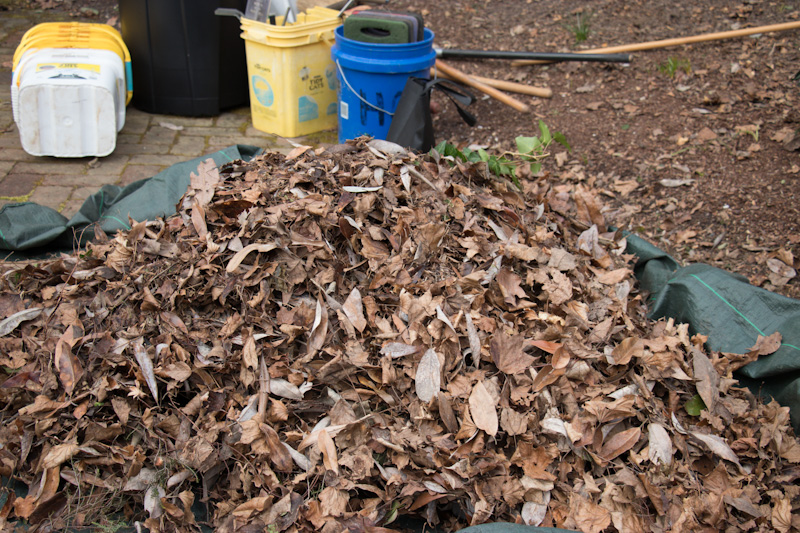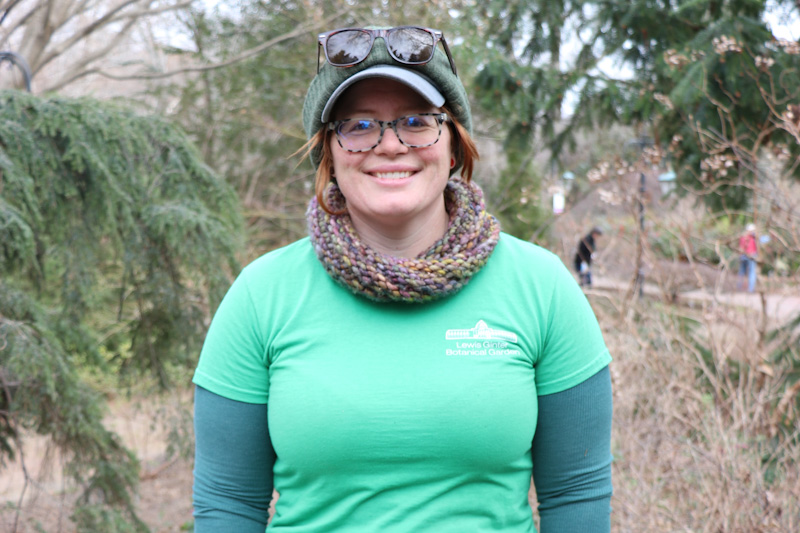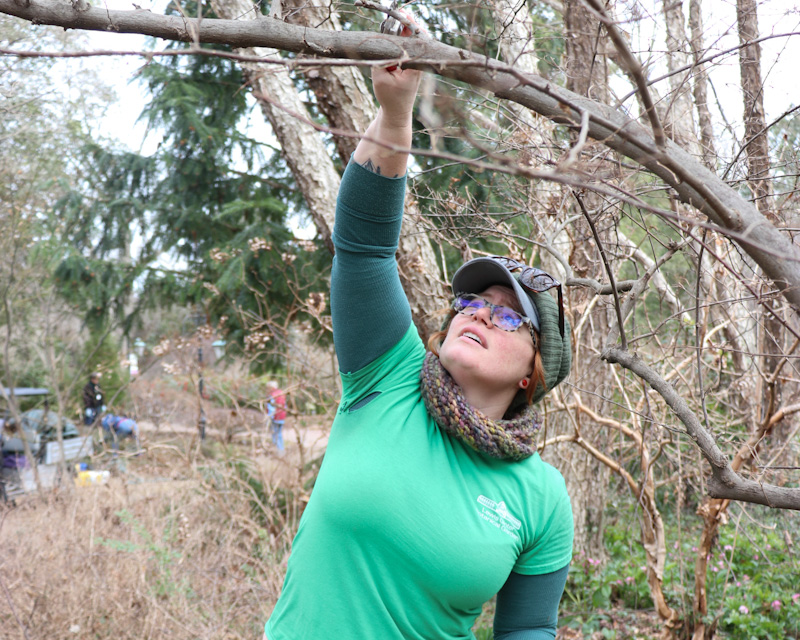Garden Talk: Get to Know Leah Purdy
All year long the Garden is full of budding plants. We start to see bright daffodils and colorful tulips in the spring, full hydrangeas in the summer, striking camellias in the fall and funky witch hazel in the winter. Have you ever wondered how we plan all of these blooms out? It’s all possible thanks to our amazing team of horticulturists. They are our plant experts. Every day they work to ensure the Garden is alive and happy.
Meet Leah Purdy
One of our horticulturists is Leah Purdy. She graduated from Temple University with a degree in landscape architecture. She didn’t always know that was the direction she would go in. Purdy says that starting at a young age, her mother would offer her the opportunity to help work outside with plants. However, she never really wanted to get her hands dirty. “She thinks it’s really funny that I do this now because she’s always loved gardening and has always kept a very nice garden,” said Purdy.
When Purdy started college, she was working on a degree in political science but the workload was getting to be too much. Her dad was a psychologist and had her take a test to find out what careers she might be interested in. The results told her that she’s really interested in working with her hands. Since she had been already working with a landscaping company, it helped push her in the direction of landscape architecture.
How does she work with the Garden?
Right after college, she got a job with us at Lewis Ginter Botanical Garden. Now Purdy is in charge of Flagler Garden. She endeavors year-round to create works of art by using plants. “I like to think of it as involving art and science. You really get to use some creative abilities to play and design. Even in the way you prune has a creative aspect to me. You’re also using science because you’re trying to pick the right plants for the right place, that you’re giving them all the nutrients they need. You [do a] soil test if something’s not looking great to see what the chemical imbalances are and what needs to happen. I really like being able to marry those two things.”
Purdy enjoys being in natural environments and around plants. She spends her free time hiking by the James River, fly fishing and climbing. Every opportunity she gets, she’s out in nature. A lot of her work with us at the Garden has inspiration drawn from these natural environments. She aims to create something that looks like nature has organized itself to meet the needs of wildlife. She also wants it to flow with the human eye’s perspective.
“No matter what you do, I personally don’t think that anybody can create anything that is more impressive than a full-on natural environment,” said Purdy.
When asked what her favorite season is, she immediately responded: fall. She says it’s the best hiking weather, the leaves are changing and it’s the best time to plant. “You ideally want to plant in the fall and that’s why it’s such a great season. You can really redesign gardens in the fall and really implement all of these changes. It’s kind of delayed gratification.” Purdy says she likes to watch the lifecycle process of her plants because it’s nice getting to see them shift each season.
I asked Purdy if she could suggest one thing for people to do in their own garden that would help the environment, what would she recommend. She said she would educate people about creating a space for insects. “Butterflies are beautiful and people care a lot about them and I think that’s great. But the insect population is so much larger than that and there are so many really important insects that are detritivores which eat decaying wood and leaves and keep our forest floors clean. We seem to forget about those insects and I just want people to know how important they are and how much I love them,” said Purdy.
How can you make a change?
She has a few recommendations for ways you can help insects in your own garden. You can leave some piles of leaves in your flower beds, near plants or in a corner of your yard for insects to live in during the winter. Above all, it provides them shelter during the colder months but also offers them food. “I think we need to keep an eye on the little things that might not seem important to us personally but do affect us in a huge way whether we know it or not.”
Purdy says getting to go outside and work with her hands every day her favorite part about working at the Garden. Plus, she says, being able to see progress in her garden areas gives her a sense of accomplishment. Her work in Flagler Garden and Dot’s Garden continues to offer our guests a beautiful place to enjoy the outdoors.

Purdy recommends leaving the leaves in your garden in order to benefit the bugs and improve the ecosystem in your yard.

